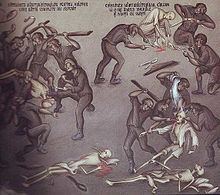Location Gherla Security class Maximum Country Romania | Status Operational Population 15,000 (as of 1960s) Opened 20 October 1785 | |
 | ||
Vizita penitenciar gherla ziua portilor deschise cluj
Gherla prison is a penitentiary located in the Romanian city of Gherla. In Romanian slang the generic word for a prison is "gherlǎ", after the institution.
Contents
Location
The prison is located adjacent to the city of Gherla near the Someș River (called Szamos in Hungarian).
History
The basic structure came from the fortress of Gherla or "Szamos-uj-var" (equivalent to transliteration from Hungarian, meaning "New castle on the Szamos") built around 1540 by George Martinuzzi, archbishop, cardinal and Imperial Treasurer of the Habsburg Empire.
Through the Imperial Decree of Joseph II, Holy Roman Emperor, dated October 20, 1785 this fortress was transformed into "Carcer Magni Principatus Transilvanie" (i.e.: The Major Prison of Transylvanian Principality).
Gherla prison has a very large underground area. During the 1960s it was reported that the prison was housing over 15,000 inmates.
Throughout its history under the Austrian Empire, then Austro-Hungarian Empire, Hungary and finally Romania the penitentiary also hosted various industrial activities.
Many Romanian military officers who had initially fought against the Soviet Army in World War II were locked into the Gherla Prison by the Communist regime after the end of the war.
Many of the Anti-Communist opposition figures spent jail time or disappeared forever into this prison.
Cemetery
Near the prison a large cemetery holds the bodies of many inmates, including Sándor Rózsa, a well-known local "Robin Hood".
Current use
The penitentiary is in service today as a "Maximum Security Penitentiary". It also houses a museum.
